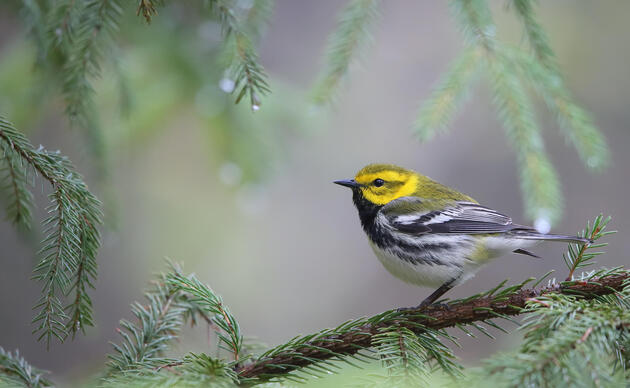We started our morning outside painting in the snow! The snow is almost a mahed potato consistency, which makes it perfect for painting color into. We experimented with color mixing, made abstract snow art and practiced writing our letters. Snow painting is such a fun and easy way to get creative outside on a warm winter day - we just mixed our washable paints with a bit of water.
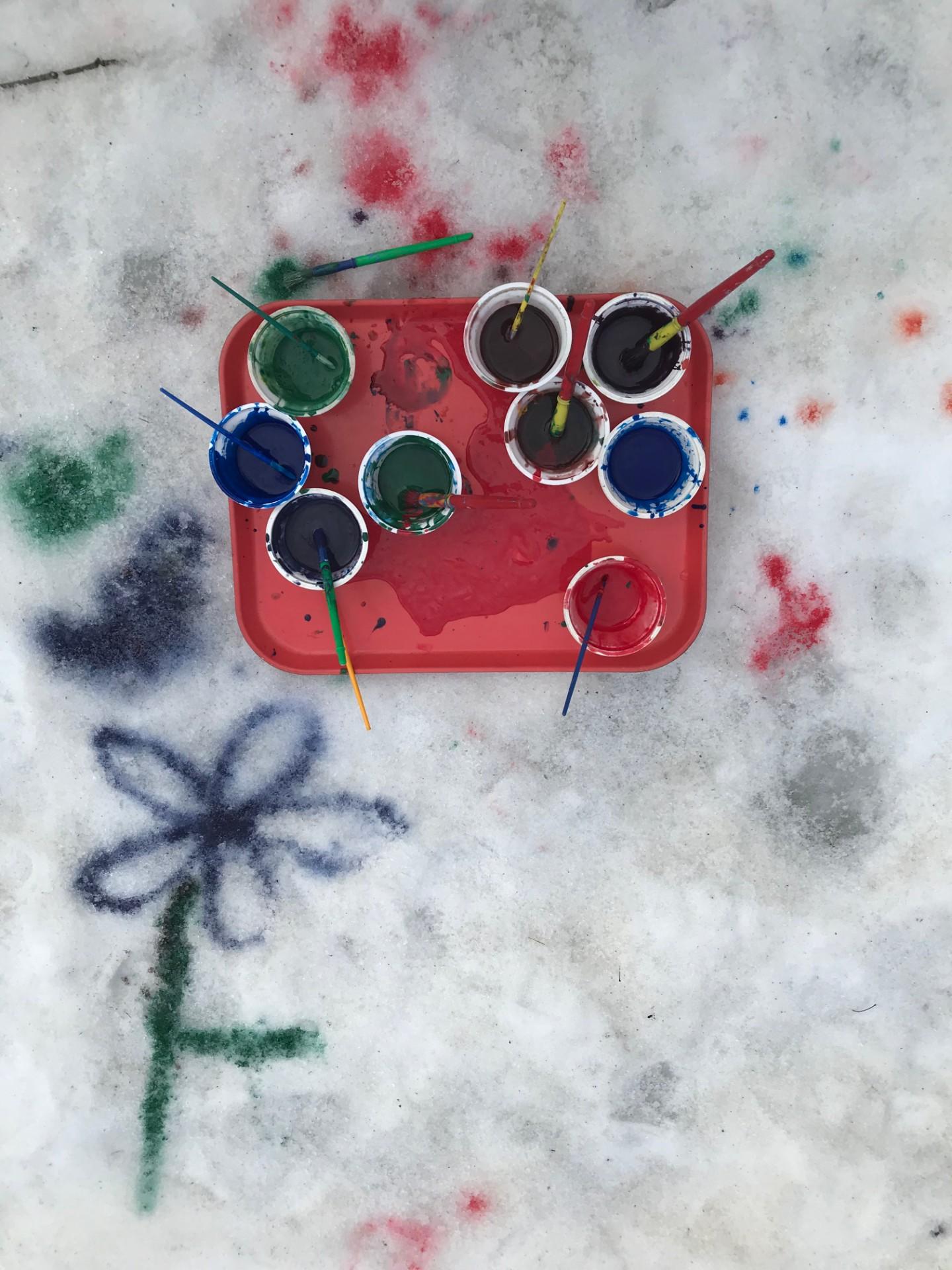
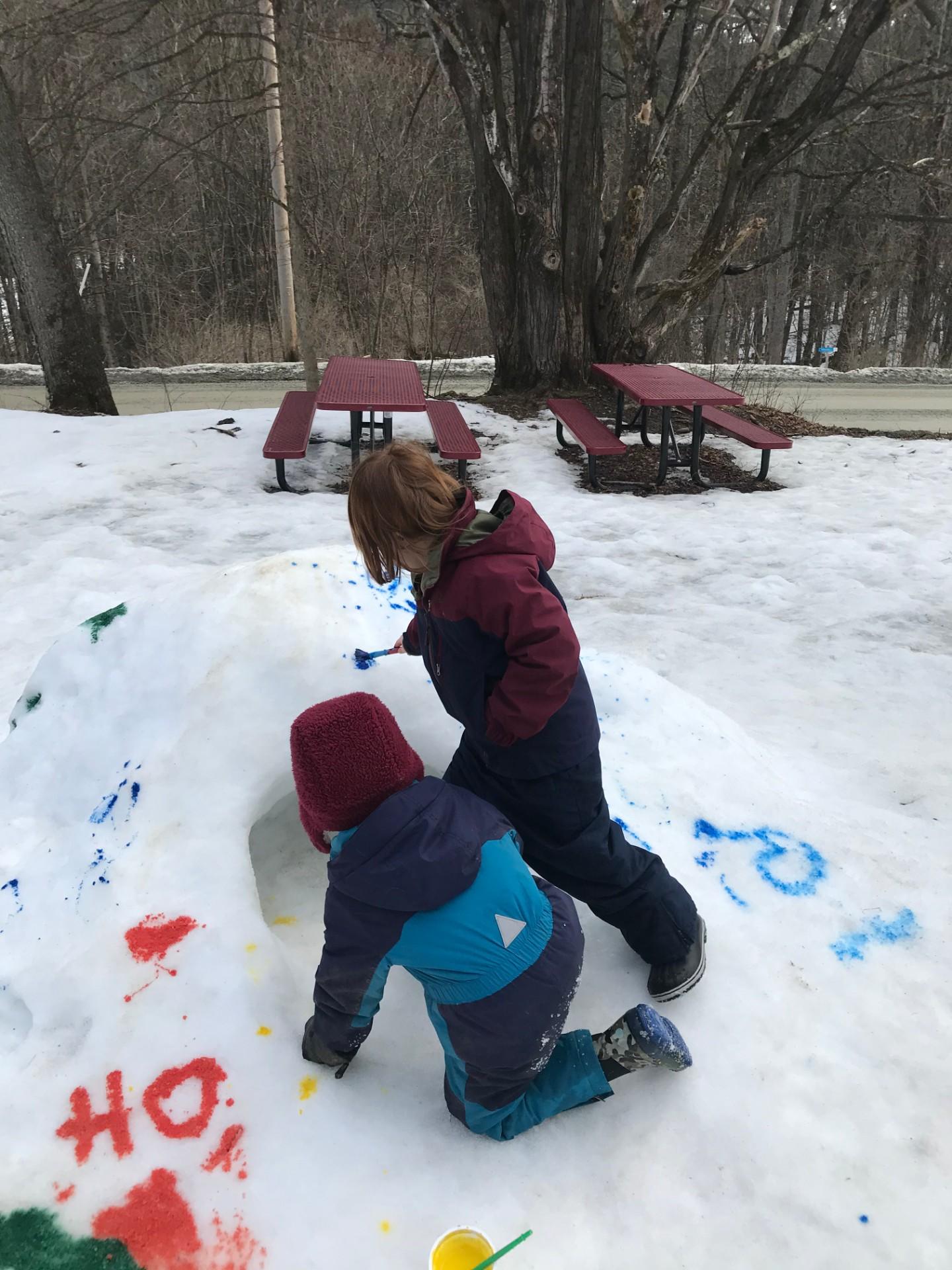
Morning meeting was a little longer this week because we had two new friends join us for the first time! We introduced ourselves, went over the rules and the structure of the day. We're so excited to have them in our group! Today we chose a friend who has been waiting for months to be morning meeting leader so he could plan a day in our sugar bush! Our morning meeting leader decided he wanted to visit our tractor that collects sap, go inside our sugarhouse and tap maple trees! After snack, we hiked with our lunches down to the garage where our tractor, affectionately named Oden by last year's Forest Playschool, lives. We have a lot of kiddos in our group that are mesmerized by big machinery and couldn't wait for the tractor to start up. Emily pulled it out of the garage so we could get a closer look and touch it once it was turned off.
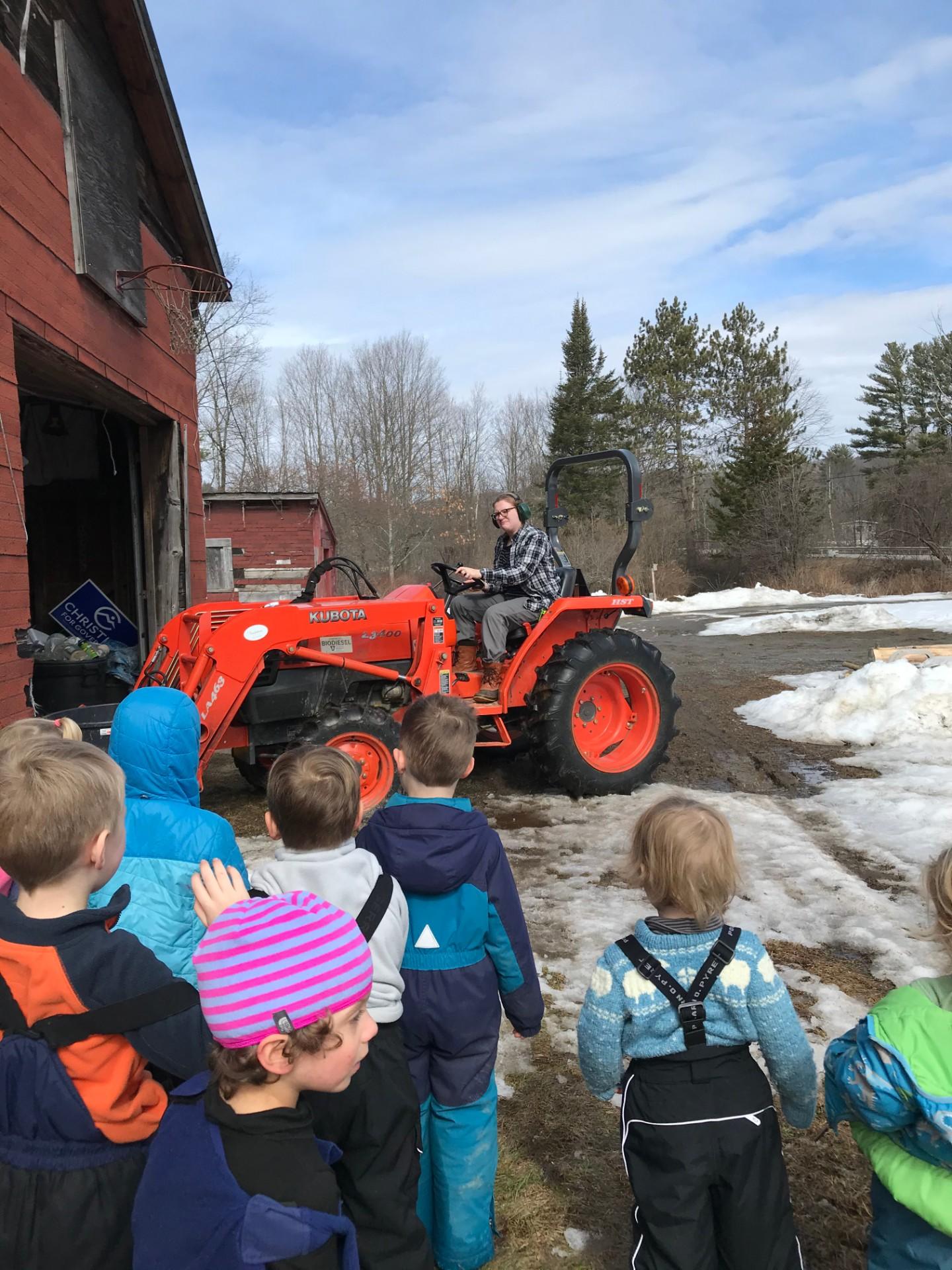
After the tractor was parked in the garage we made our way over to the sugar house where all of our sap becomes syrup! We talked about the different parts of the building we could see from the outside including the coopala, the structure that is open on two sides on top of the roof that ventillates the steam coming from our evaporator pan. A few friends were confused about the difference between steam and smoke. Emily explained that steam is water vapor that comes from the boiling water when the water gets so hot that it turns from liquid to gas, whereas smoke contains soot and gases, usually carbon dioxide. Also, steam is usually colorless, but smoke can change color depending on what is being burned.
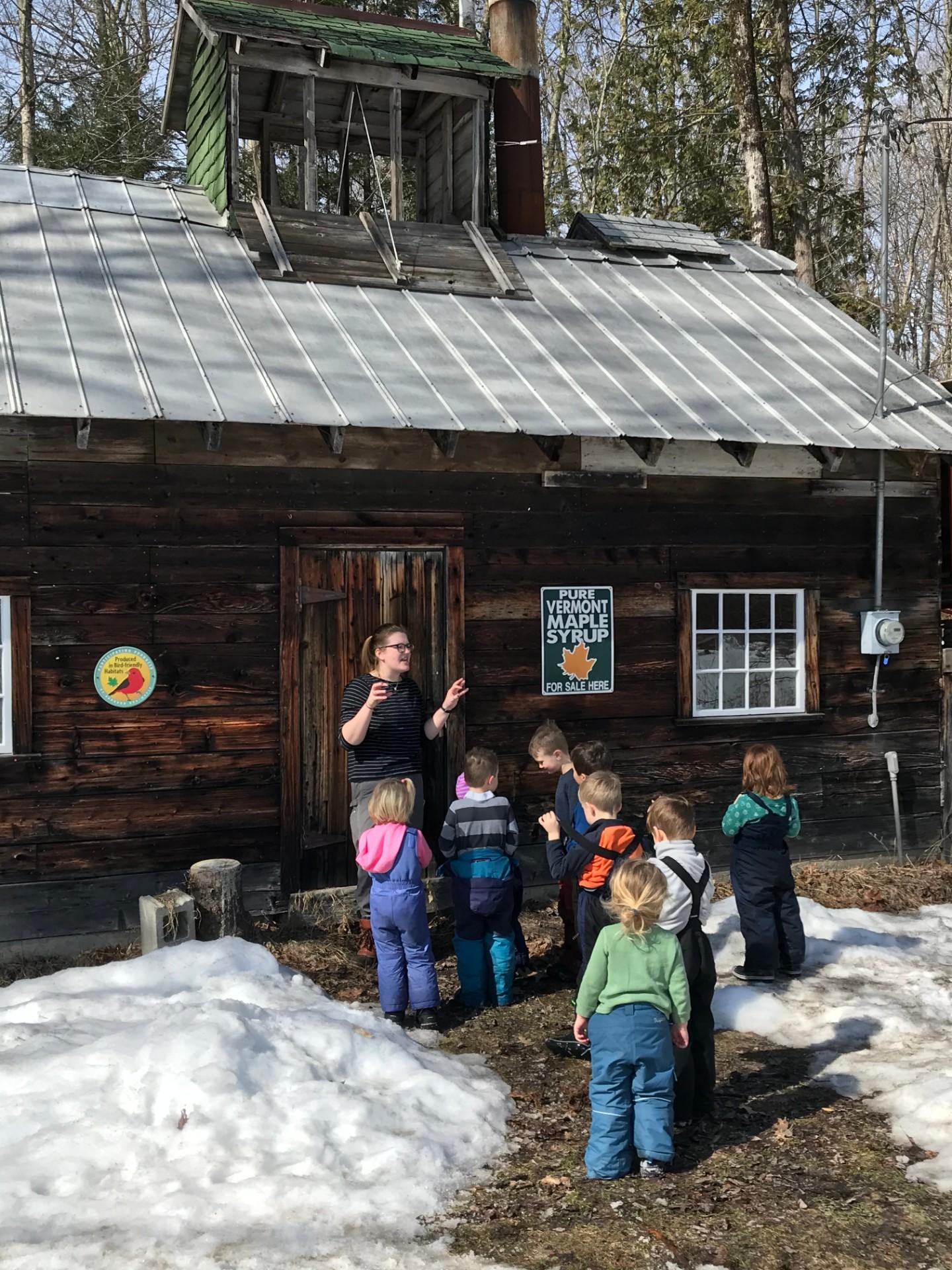
We got the chance to go inside the sugarhouse and see sap getting boiled down into maple syrup! We peered into the evaporator pan to see how sap moves through it and talked about how you know syrup is ready.
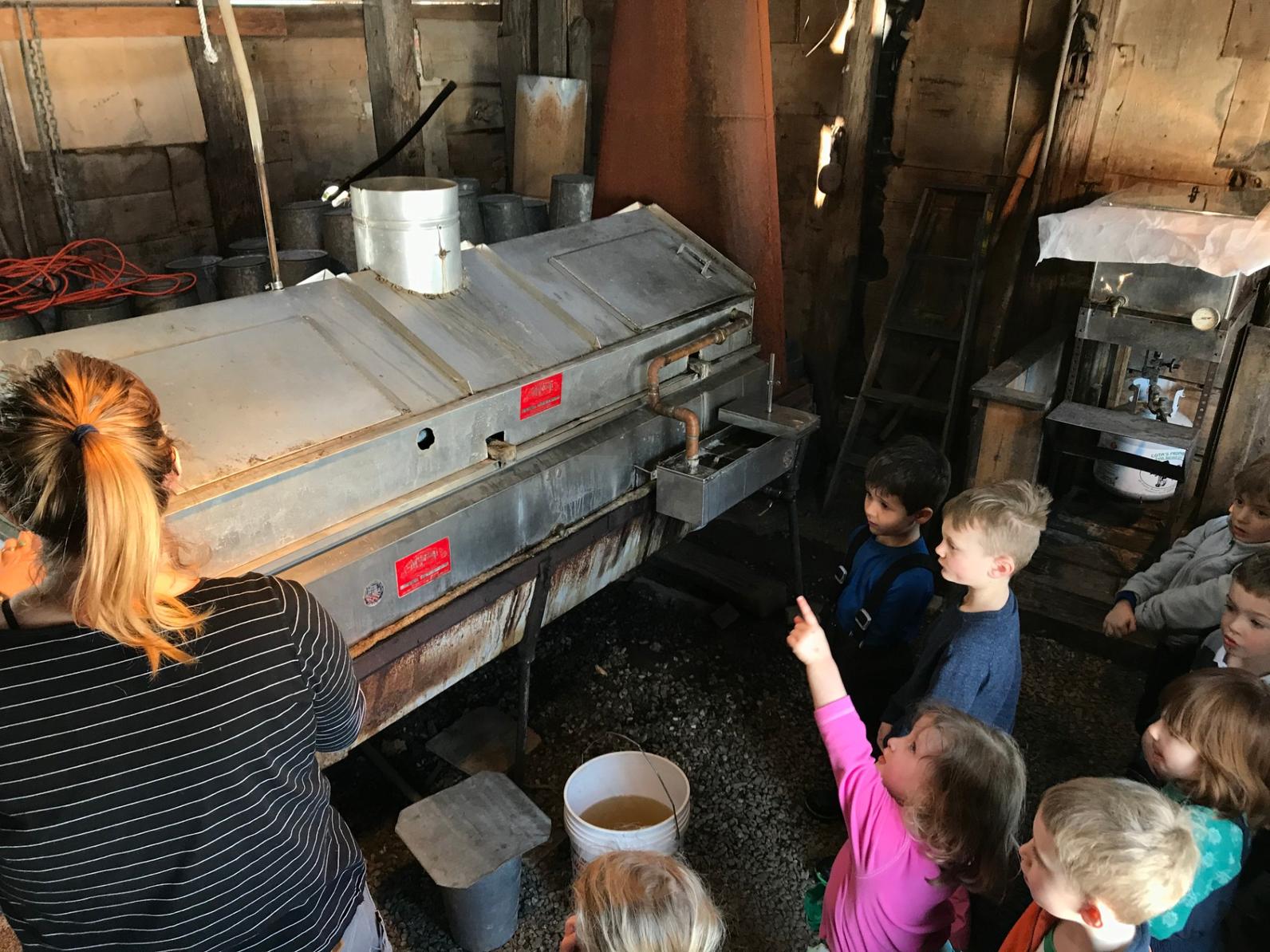
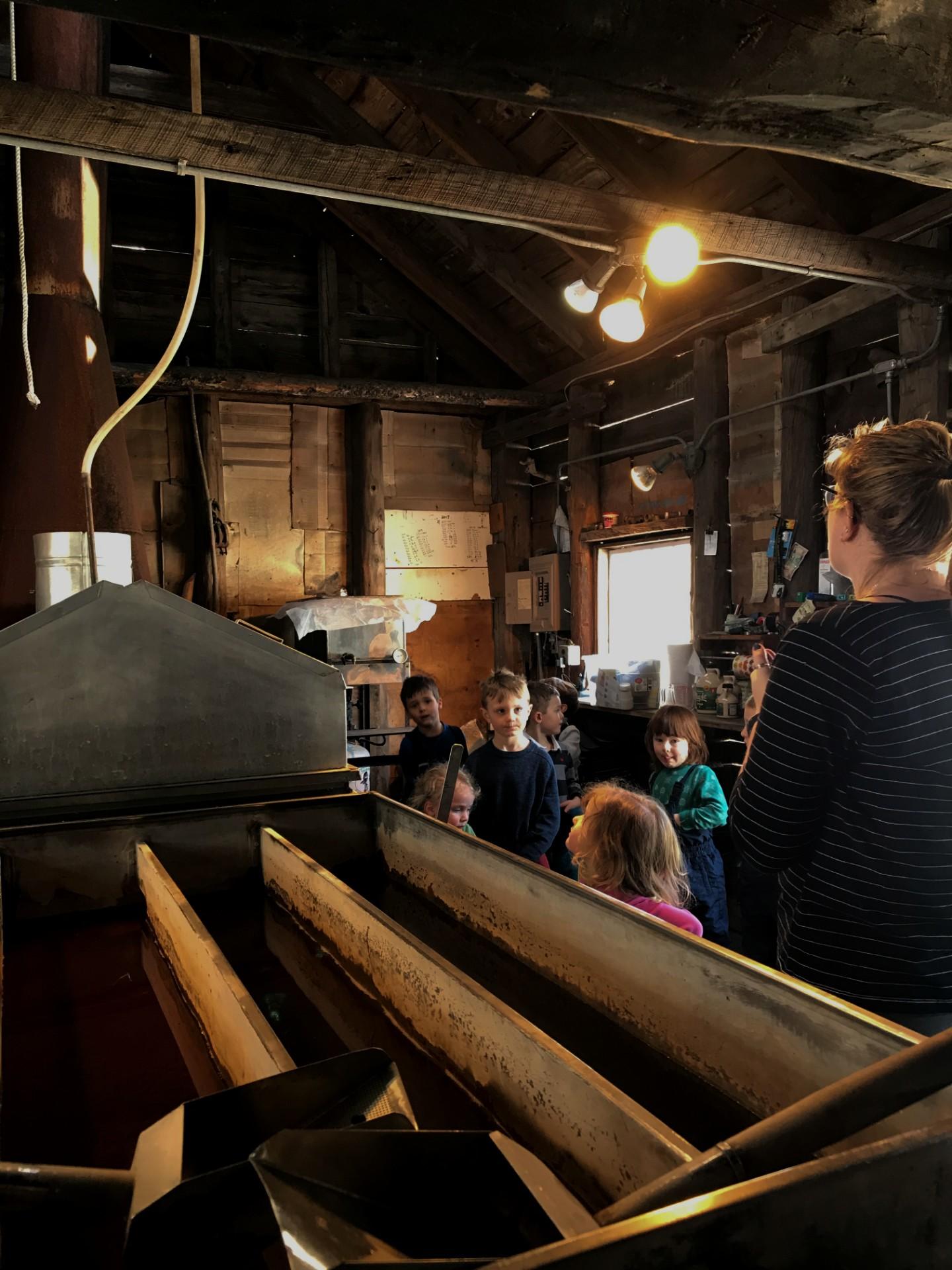
After seeing where the sap is turned into maple syrup we had a nice lunch outside at the picnic table. It was so warm in the sunshine that some of us took off our winter jackets and hats. When lunch was over it was time to tap! We have a section of the sugar bush that we dedicate to education programs so that students can practice tapping trees. First we discussed how to identify a sugar maple tree. Young sugar maples have grey-brown, smooth bark whereas older trees have furrowed, deeper brown colored bark. Another way to identify is by their opposite branching, aka one leaf grows across from the other leaf. Of cource, if leaves are visible they are a fantastic clue, but in the winter that's not always a dependable method of indentification. In our forest, finding tap holes in a tree is a great way for kids to decide if it is sugar maple or not.
I found us a tree and asked the group to decide whether it was a sugar maple or not. Some friends started investigating the bark for holes while others did their best to peer up at the branches to look for opposite branching. The group declared this was a sugar maple! So we combined our group's strength and all tapped the tree together. Everyone was great about waiting their turn and sharing the responsibility.
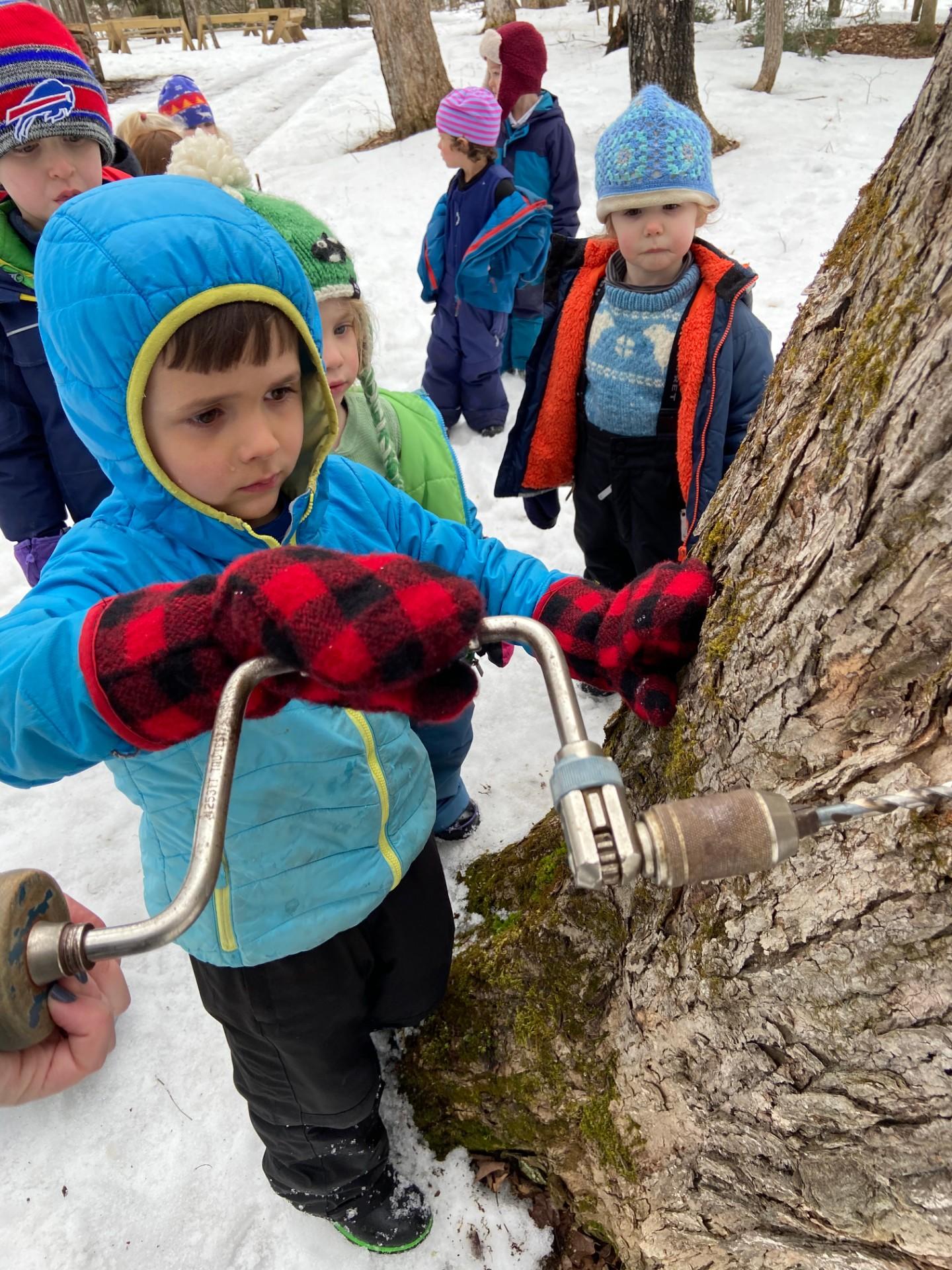
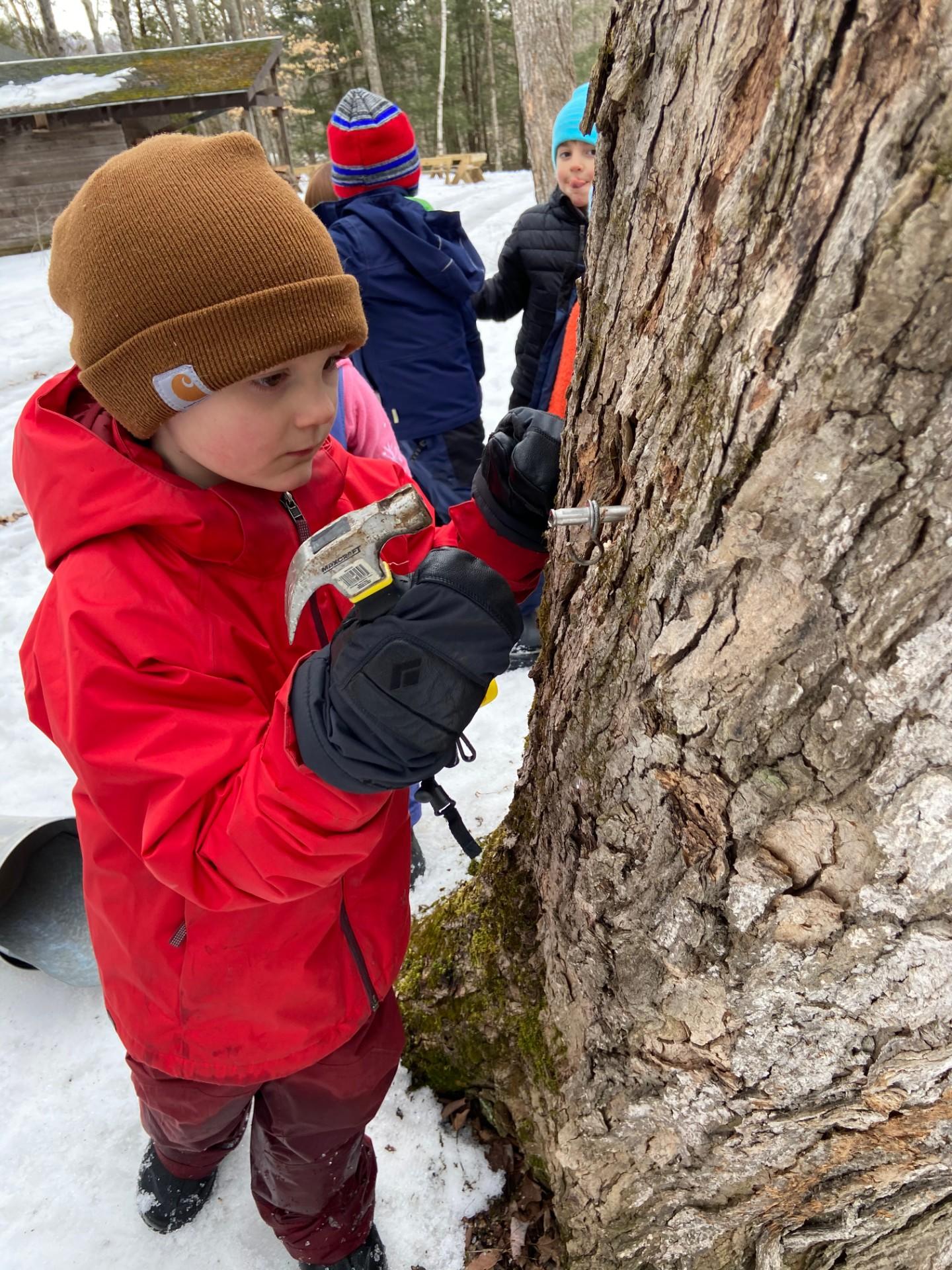
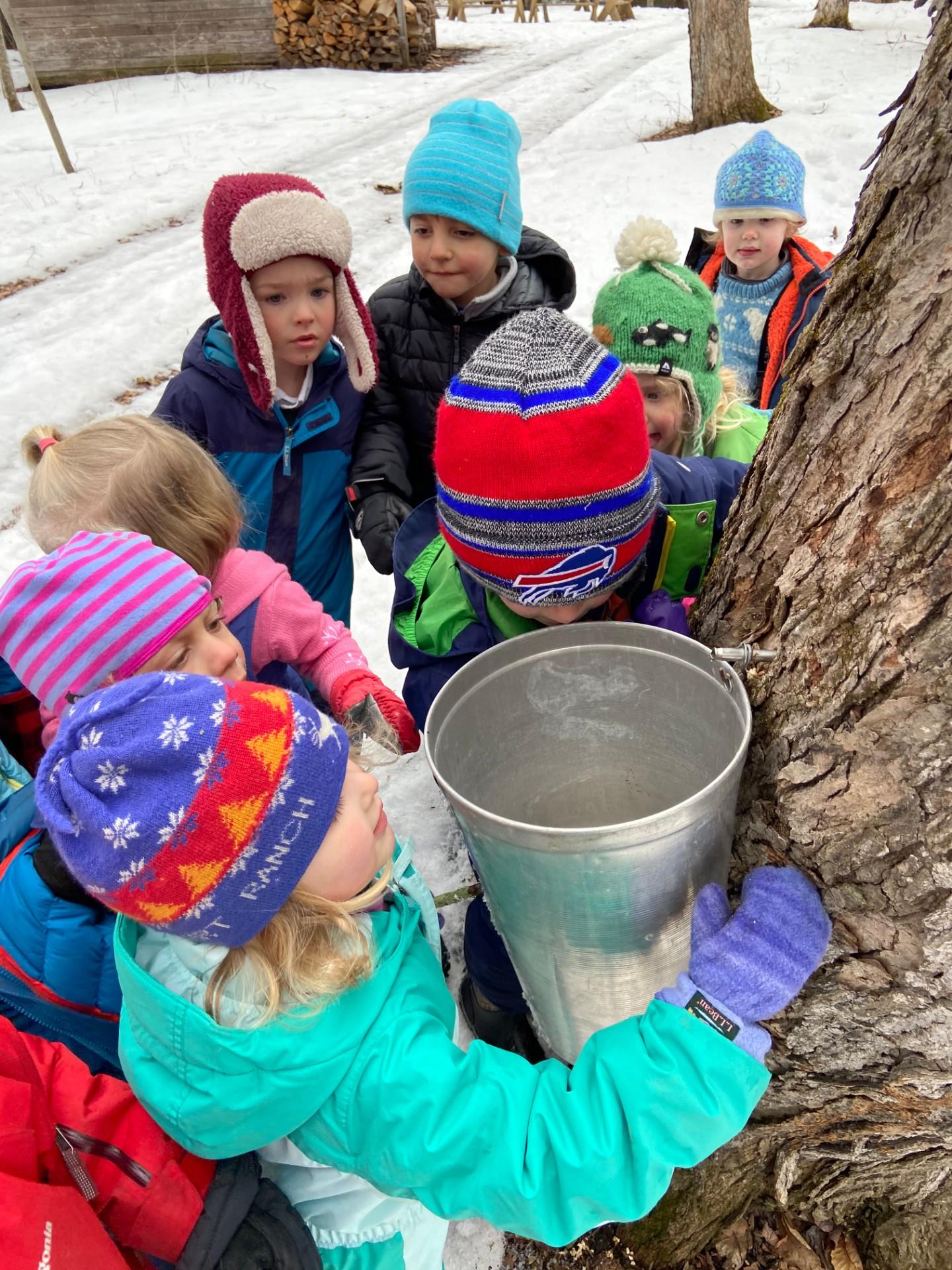
After tapping we got to try all three different kinds of syrup we produce at our center. Each playschooler stood in line with a sampler plastic spoon and recieved a drop or two of Golden, Amber and Dark maple syrup. By the time we finished tasting, it was time to hike back up the hill to meet our adults.
See you next week!
Take Action
Sign up for updates about Audubon Vermont's conservation work, get news about our activities and local events, and find out how you can take action to help birds.

